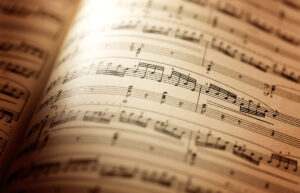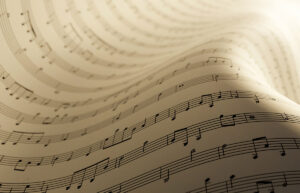What is Reverb in Music: Meaning, Types, Steps, Uses & Tips

Welcome to the immersive realm of soundscapes, where echoes whisper tales and melodies linger in the air. Have you ever wondered, “What is reverb in music?” Join us as we explore the intricacies of reverb and how it shapes the auditory tapestry of your favorite tunes.
Welcome to TheDemoStop, now join the community!
Connect with artists, fans and producers around the world.
What is reverb in music?
In music, reverb refers to the persistence of sound reflections in a space after the original sound is produced. Essentially, it’s the audible residue of echoes that enrich a musical environment. So, what is reverb in music? It’s the atmospheric quality that gives depth, dimension, and a sense to the sound we hear, creating a more immersive and captivating auditory experience.
Origins of reverb in music
The origins of reverb in music trace back to the natural acoustics of physical spaces. In ancient times, musicians and singers intuitively discovered that certain environments, like caves or amphitheaters, enhanced the quality of their performances through the naturally occurring echoes and reflections of sound. This early recognition laid the foundation for understanding ‘what is reverb in music.’
As architectural marvels like cathedrals and concert halls emerged, their unique designs unintentionally became catalysts for captivating reverberations. The deliberate construction of these spaces began to influence musical composition and performance as artists sought environments that could enrich their soundscapes.
Importance of reverb in music production
The importance of reverb in music production lies in its transformative role, elevating the sonic experience. Essentially, “what is reverb in music” becomes a question of atmosphere and depth. Reverb adds a sense of space, enveloping sounds in a three-dimensional environment. It’s a crucial tool for enhancing realism, creating a sense of distance, and imparting emotional depth to musical compositions.
Whether simulating concert hall grandeur or crafting intimate acoustic settings, reverb is a fundamental element that allows producers to sculpt the mood and texture of a piece, making it an indispensable asset in the palette of music production.
Types of reverb
Hall reverb
Hall reverb simulates the acoustic characteristics of large concert halls or cathedrals. It has a spacious and immersive quality, providing a sense of grandeur and natural resonance. It is ideal for orchestral compositions, ballads, and genres that benefit from a lush, expansive sound.
Room reverb
Room reverb emulates the sound reflections in smaller spaces, like studios or bedrooms. It tends to have a more defined and controlled ambiance compared to hall reverb. It is suited for a variety of genres, particularly those requiring a more intimate or close-quarters feel, such as jazz or acoustic performances.
Chamber reverb
Chamber reverb replicates the reflective properties of small, specifically designed rooms. It balances the openness of the hall reverb and the intimacy of the room reverb. It is commonly used in classical and chamber music recordings, as well as certain vocal productions.
Plate reverb
Plate reverb is a mechanical system that uses a large metal plate. Sound vibrations are transduced into the plate, producing a distinctive, smooth reverb with a bright character. It is frequently used to record vocals, drums, and various instruments, providing a classic and timeless sound.
Spring reverb
Spring reverb relies on metal springs to create reverberation. It often produces a distinctive “boing” or “twang” sound and was popular in vintage guitar amplifiers. It is commonly found in classical rock and surf music, appreciated for its unique and characterful tone.
Shimmer reverb
Shimmer reverb introduces pitch-shifting elements to the reverberated signal, creating ethereal and ambient textures. It imparts a dreamlike quality to the sound. It is frequently used in ambient and experimental genres and adds a celestial touch to lead lines or background atmospheres.
How to mix reverb
Patch sidechain
Applying sidechain compression to the reverb helps prevent it from muddying up the mix. By sidechaining the reverb to a key element, like vocals or drums, the reverb level is reduced when the key element is present, maintaining clarity. It is useful in genres where a clean and defined sound is crucial, such as pop or electronic music. It ensures that the reverb doesn’t overshadow important elements.
Reverb type
Choosing the appropriate reverb type is vital for matching a track’s desired mood and style. Experiment with hall, room, plate, or specialized reverbs to complement the genre and instrumentation. You have to tailor the reverb type based on the sonic landscape you aim to create—hall reverb for spaciousness, room reverb for intimacy, and so forth.
Selecting your size
Adjusting the size parameter controls the virtual space’s dimensions in which the reverb occurs. Larger sizes emulate expansive environments, while smaller sizes replicate more confined spaces. Match the size to the desired atmosphere of the track. Larger sizes may suit orchestral arrangements or ballads, while smaller sizes can enhance the realism of close-miked instruments.
Welcome to TheDemoStop, now join the community!
Connect with artists, fans and producers around the world.
Decay
Decay determines how quickly the reverb diminishes after the initial sound. Longer decay times contribute to a more sustained and ambient reverb, while shorter decay creates a tighter sound. Adapt decay to the tempo and mood of the track.
Pre-delay
Pre-delay is the time gap between the original sound and the onset of reverb. Adjusting pre-delay can enhance the clarity of the dry signal by creating separation between the two. In genres with quick transients, like percussive-heavy music, adding a subtle pre-delay can maintain the dry signal’s punchiness while still incorporating the essence of what is reverb in music.
Early-reflection level
Early reflections are the initial reflections of sound within a space. Controlling the early reflection level allows for shaping the initial attack and presence of the reverb. Adjust early reflection levels to influence the perceived distance and intimacy of the sound source within the virtual space.
Diffusion level
Diffusion affects how scattered or focused the reflections are within the reverb. Higher diffusion levels create a smoother, more blended reverb, while lower levels result in a more defined and separate sound. Smooth diffusion works well for creating lush, ambient reverbs, while less diffusion can enhance clarity.
Mix level
The mix level controls the balance between the dry (original) and wet (reverberated) signals. Finding the right mix level ensures the reverb enhances the track without overpowering it. Experiment with mix levels to strike a balance between a natural, immersive sound and maintaining clarity in the mix.
How to use reverb on different instruments
Bass
When applying reverb to the bass, it’s essential to be subtle to maintain low-end clarity. Use a short decay time and moderate mix level to add a touch of ambiance without muddying the low frequencies. It is suitable for genres where a hint of space is desired, such as jazz or certain styles of electronic music. Experiment with room or plate reverbs to keep the bass tight yet spatially present.
Drums
Drums benefit from a well-balanced use of reverb to add dimension and depth. Apply shorter decay times for snappy elements like snare drums and longer decay times for a more ambient feel on cymbals. You need to use room or hall reverbs for a natural drum kit sound. Consider applying different reverb settings to individual drums within a kit to create a more dynamic and realistic spatial representation.
Guitar
Reverb can greatly enhance the character of a guitar, providing a sense of space and dimension. Experiment with different reverb types, such as plate or spring, to match the genre and style of the guitar part. For clean guitar parts, consider using subtle room reverb.
Vocals
Applying reverb to vocals is a common practice to create a sense of space and emotion. Adjust the decay time based on the tempo and style of the song, and be mindful of the pre-delay to maintain vocal clarity. Hall and plate reverbs are popular choices for vocals, offering a spacious and polished sound.
8 tips for using reverb in music production
Use your reverb’s high-pass filter
Engage the high-pass filter on your reverb to eliminate unnecessary low-frequency content. This ensures that the low end remains clean and avoids muddying the mix. Essential for preserving the clarity of instruments, especially in genres with pronounced bass elements. Apply high-pass filtering judiciously, particularly on instruments that don’t benefit from low-frequency reverb, such as vocals or acoustic guitars.
Use your reverb’s low-pass filter
Employ the low-pass filter to control the high-frequency content of the reverb. This prevents excessive brightness and can contribute to a more cohesive and balanced sound. Adjust the low-pass filter to match the desired tonal characteristics of the reverb, keeping it in harmony with the overall mix.
Automatic reverb parameters
Dynamically adjust reverb parameters throughout a track using automation. For example, increase reverb during spacious sections and decrease it for more intimate parts. This adds a dynamic and evolving dimension to the mix. Use automation to accentuate key moments or create transitions, enhancing the overall impact of the music.
Pan verbs for width
Pan different instances of reverb to create a sense of spatial width. This technique helps distribute the reverberated sound across the stereo field, contributing to a more expansive and immersive sonic experience. Experiment with panning reverb returns for instruments placed at different positions in the mix, creating a sense of depth and dimension.
Determine the location
Consider the virtual space in which the reverb is occurring. Tailor the reverb type and size to match the intended location, whether it’s a tight studio, a grand hall, or an outdoor environment. Match the reverb characteristics to the genre and mood of the music, ensuring that it complements rather than clashes with the sonic atmosphere.
Welcome to TheDemoStop, now join the community!
Connect with artists, fans and producers around the world.
Use less than you think
Apply reverb sparingly to maintain clarity and prevent sonic overcrowding. Too much reverb can lead to a washed-out or distant sound. Start with conservative settings and gradually increase to achieve the desired effect.
Compress your vocal ‘verbs’
Apply compression specifically to the reverberated signal on vocals. This helps control the dynamics of the reverb, preventing it from overpowering the dry vocal and ensuring a smoother integration. Use gentle compression on the vocal reverb to maintain a consistent level and prevent distracting fluctuations in the ambient sound.
Avoid too many different reverb types
Limit the variety of reverb types used in a mix to maintain cohesion. While diversity can be beneficial, an excessive array of different reverbs may result in a disjointed and chaotic sonic landscape.
Conclusion
What is reverb in music?
Reverb in music is the persistence of sound reflections in a space after the original sound is produced.
Origins of reverb in music
The origins of reverb in music and where it came from trace back to ancient musicians discovering the acoustic richness of certain spaces. This led to intentional architectural designs and technological innovations for manipulating sound reflections in recording environments.
Importance of reverb in music
Reverb in music is crucial for enhancing the sonic experience by adding depth, realism, and emotional resonance. It contributes to the atmosphere, spatiality, and overall texture of musical compositions, making it an essential element in music.
Types of reverb
- Hall reverb
- Room reverb
- Chamber reverb
- Plate reverb
- Spring reverb
- Shimmer reverb
How to mix reverb
- Patch sidechain
- Reverb type
- Selecting your size
- Decay
- Pre-delay
- Early reflection level
- Diffusion level
- Mix level
How to use reverb on different instruments
- Bass
- Drums
- Guitar
- Vocals
8 Tips for using reverb in music production
- Use your reverb’s high-pass filter
- Use your reverb’s low-pass filter
- Automate reverb parameters
- Pan verbs for width
- Determine the location
- Use less than you think
- Compress your vocal ‘verbs’
- Avoid too many different reverb types
FAQs
What is reverb in music?
Reverb in music is the persistence of sound reflections in a space, enriching the auditory experience by adding depth and atmosphere to the original sound.
What is the origin of reverb in music?
Reverb in music started when ancient musicians realized that different spaces had unique sound qualities. This discovery led to intentional architectural designs and, later, advancements in technology to manipulate sound reflections in recordings.
Why is reverb important in music production?
Reverb is important in music production as it enhances the sonic quality by adding depth, spatial richness, and emotional resonance, contributing to the overall atmosphere and texture of the music.
What are the different types of reverb?
- Hall reverb
- Room reverb
- Chamber reverb
- Plate reverb
- Spring reverb
- Shimmer reverb
How to mix reverb?
- Patch sidechain
- Reverb type
- Selecting your size
- Decay
- Pre-delay
- Early reflection level
- Diffusion level
- Mix level
How to use reverb on different instruments?
- Bass
- Drums
- Guitar
- Vocals
What are the tips for using reverb in music production?
- Use your reverb’s high-pass filter
- Use your reverb’s low-pass filter
- Automate reverb parameters
- Pan verbs for width
- Determine the location
- Use less than you think
- Compress your vocal ‘verbs’
- Avoid too many different reverb types
What is hall reverb?
Hall reverb is a type of reverberation effect that simulates the sound reflections and characteristics of a large concert hall or cathedral, providing a spacious and immersive quality to the audio.
What is room reverb?
Room reverb is a reverberation effect that emulates the sound reflections and characteristics of smaller spaces, like studios or bedrooms. It adds a controlled ambiance to the audio, suitable for creating intimacy in the sound.
What is chamber reverb?
Chamber reverb is a reverberating effect that replicates the sound reflections found in small, specially designed rooms. It provides a balanced spatial quality, combining elements of both hall and room reverbs.































































